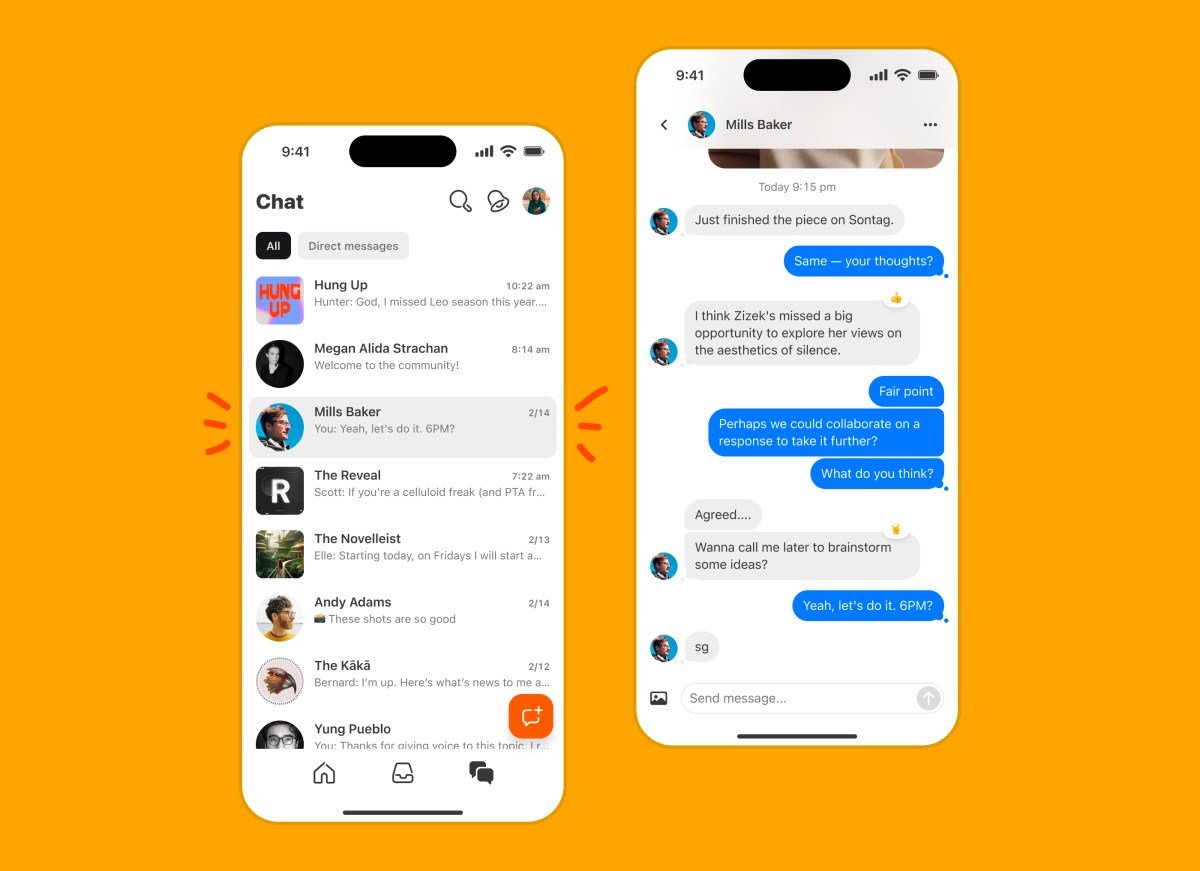Substack has announced the launch of a new feature that will allow users to privately communicate through direct messages. The highly requested function, simply known as DMs, will provide a platform for one-on-one conversations on both the app and website versions of Substack. Access to DMs can be found under the “Chat” tab.
By default, users on Substack will only receive DMs from those they are connected with. Any messages from outside sources will be directed to a Requests folder, where users can choose to either accept or reject them.
Last year, Substack introduced their version of a Twitter-like platform called Notes, and now the company is borrowing yet another feature from the social media giant. After allowing users to follow each other a few months following the launch of Notes, Substack has gradually been transitioning into more of a social network rather than solely a newsletter platform.
According to Substack, DMs were highly requested by their users, and the response on the announcement post has been overwhelmingly positive. However, as with any new feature, there are some users who may not be interested in utilizing it. One user commented, asking if DMs can be turned off, stating that they do not want to receive direct contact from anyone. Substack replied, assuring that users have the option to disable DMs in their settings and can choose to only allow messages from no one.
To test the effectiveness of DMs, Substack implemented the feature with a select group of writers and found that it can be utilized as a tool to build subscriber loyalty, connect with fellow writers, and cultivate a reader community. With the addition of DMs, Substack hopes that it will enhance the connections made between writers on the platform.
For writers who want to encourage their readers to reach out through DMs, Substack offers the option to add a “Send a message” button on new posts. This feature can prove useful for writers who may want to solicit news tips or collect questions from their readers.
The launch of DMs comes shortly after Substack updated their peer-to-peer recommendation system, allowing writers to create and share a list of publications for their readers to subscribe to. The objective behind this change is to assist writers in expanding their reach by aiding other writers, potentially gaining more subscribers and followers.
However, Substack has been facing some controversy in 2024 following their decision not to ban Nazi newsletters. CEO Hamish McKenzie stated that while Substack prohibits content containing “incitements to violence,” the company will maintain a “decentralized approach to content moderation.” As a result, notable writers such as Casey Newton and Ryan Broderick have decided to leave the platform.








